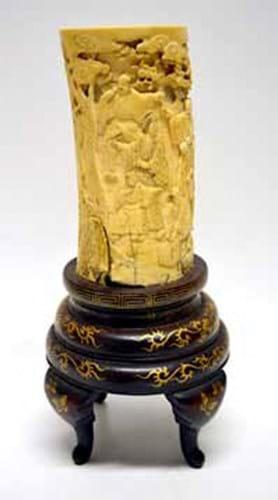
Campaign group WildAid compiled data from Hong Kong’s Agriculture, Fisheries and Conservation Department. As reported in The Times today, it found a total of 2,524 legal ivory items were sent from Britain to Hong Kong last year, up from 1,141 the year before.
It is not currently illegal to import bonafide ivory antiques into Hong Kong. Although the territory has plans to ban ivory trading by 2021.
In a letter to the Guardian today, WildAid chief executive Peter Knights said: “We do need unambiguous laws and better law enforcement. But most crucially, we need to stigmatise the use of wildlife products in countries where consumer demand is high.”
The WildAid report was published during the Cites (Convention on International Trade in Endangered Species) summit which is taking place in Johannesburg in South Africa.
Plans To Ban All Post-1947 Ivory
Last week environment secretary Andrea Leadsom's announced plans to ban all post-1947 ivory in the UK. She will launch a consultation with the antiques industry next year amid discussions on how the industry can prove works are indeed older than 1947.
A letter from dealer Martin Levy of H. Blairman & Sons, was also published in the Guardian today.
He said: “The entire community of art historians, curators, connoisseurs and collectors unequivocally supports the preservation of endangered species. But by the same token it can be said with confidence that bona fide, pre-1947 works of art documented by Cites made of or incorporating ivory have no impact whatsoever on the thirst for modern tusks and trinkets: these are two utterly separate issues.”
The antiques industry was previously buoyed by a study by Traffic that inspected over 3200 pieces of ivory on sale at shops and markets in London and found only one item considered post-1947.
The report, published by the NGO in August, concluded that “links [between the antiques trade and] the current elephant poaching crisis appear tenuous at best”.





